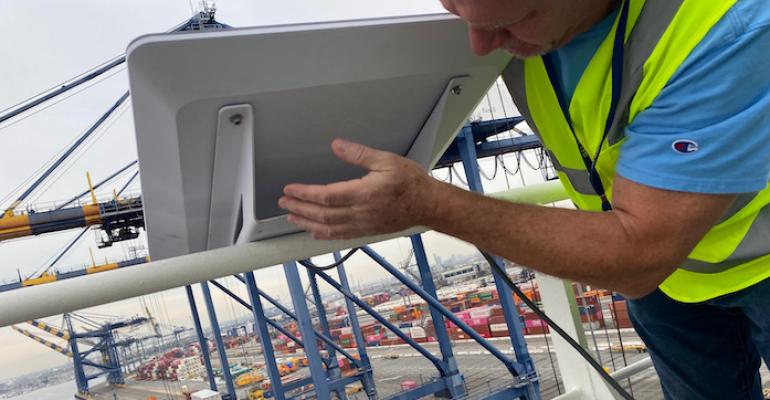First quarter data brings a 7.1 reading out of 10, dropping from the 7.69 recorded in Q4 2022—an all-time high. Across the 10 areas that make up the index, connectivity was the only to record an increase, albeit a slight one.
“However, rather interestingly it was not all good news in this regard. The impact on social cohesion on board was mentioned, and it is clearly something which needs to be very carefully and considerately managed,” said the report.
The authors also noted a historical tendency for levels to start low at the beginning of the year and rise as the year progresses.
Access to welfare services and shore leave were the main problem areas identified again in the latest report. The shore leave happiness level dropped from 6.76 in Q4 2022 to 6.23 in the latest report, with COVID-19 restrictions still affecting crewmembers’ ability to go ashore.
China and Saudi Arabia were noted as regions where full access to shore leave has yet to be reinstated after the pandemic.
“The inability to have shore leave or limited opportunities for going ashore were described as making life at sea boring and seriously affecting crew members’ well-being and lowering morale on board,” said the report.
Adding to the issue, some crew report being too tired or not having enough time to go ashore where it is possible.
The report noted a growing dichotomy between the need for social cohesion onboard and the impact of increased connectivity on the willingness of seafarers to socialise with the rest of the crew. Rather than a simple case of increased connectivity leading to lower socialisation, the report said the issue is more complex.
“People do not interact, engage, or spend time in shared areas because there is not enough to entice or encourage them to do so. Seafarers feel that there is a massive hole at the centre of the onboard social experience. So, with that in mind many are more than happy with taking themselves off and simply being alone in their space, using online access as the consolation for a lack of cohesion” said the report.
The top issues identified by respondents in the latest Seafarer Happiness Index report were:
- 1. A decline in seafarers’ satisfaction and the overall trend of decreasing satisfaction levels. Only connectivity saw a rise in this reporting period.
- 2. Yet again, we returned to issues of lack of shore leave and delays in sign-off procedures causing frustration.
- 3. Reports of attempts by some owners to make seafarers sign on for longer periods than desired, shifting from past practices.
- 4. Challenges coping with extended periods on board made all the harder owing to poor food, paperwork demands, ineffective shipboard leadership, and a sense of social isolation.
- 5. Growing wellness gap between companies that provide health and wellbeing programs for seafarers and those that do not.
- 6. Concerns about access to dental care in some ports.
- 7. Limited access to mental health support, medical advisory services, and physical well-being consultations was reported by some seafarers.
- 8. Connectivity issues at sea, including concerns about data allowances, internet speed, and connectivity limitations.
- 9. Varying quality of internet connectivity at sea across different companies.
- 10. Optimism that Starlink will change connectivity at sea.
- 11. Concerns about salaries, cost of living, lack of room for financial growth, and potential obstacles to career advancement.
- 12. Challenges related to onboard meals, including inadequate food budgets, poor food quality and hygiene, unqualified cooks, and lack of nutrition education.
- 13. Importance of positive onboard interactions for seafarers’ well-being and job satisfaction.
- 14. The dichotomy between the impact of internet connectivity and seafarers’ willingness to engage with each other on board.
- 15. Insufficient entertainment options on board are making it harder for people to find a reason to come together.
- 16. Need for more enticing activities and shared spaces to encourage crew members to interact.
- 17. Workload, fatigue, and high-pressure situations hinder interactions among crew members.
- 18. Bureaucracy and unnecessary jobs add to workload and stress.
- 19. Mixed perceptions of rules and regulations among seafarers.

